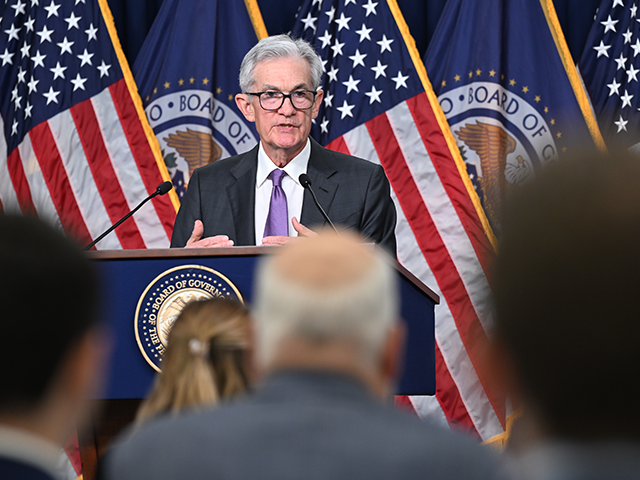Goldman Sachs’ Economics Chief Pushes a July Rate Cut
There was a brief explosion of interest on Monday morning in the idea that the Federal Reserve might cut interest rates at its July meeting. Fed Chairman Jerome Powell effectively shot down the idea on Monday afternoon.
Jan Hatzius, the Chief Economist and Head of Global Investment Research at Goldman Sachs, put out a note on Monday morning arguing that there is a “solid rationale” for a cut at the July 30-31 meeting. The basic argument was that if the Fed is already convinced it should cut rates in September, why wait?
The details are slightly more interesting. Here’s what Hatzius argues:
First, if the case for a cut is clear, why wait another seven weeks before delivering it? Second, monthly inflation is volatile and there is a risk of temporary reacceleration, which could make a September cut difficult to explain. Starting in July would sidestep that risk. Third, the FOMC has an undeniable (if never acknowledged) incentive to avoid initiating cuts in the last two months of a presidential election campaign. This doesn’t mean the committee couldn’t cut in September, but it does mean that July would be preferable.
The market does not expect a July cut; so, we at least tip our hat to Hatzius’ willingness to step out of line with consensus. As of Monday afternoon, the odds of a July rate cut implied by the federal funds swaps market are just under seven percent. By contrast, the odds of a September cut are now 98 percent.
Critical Flaws in Hatzius’ Argument
There are, however, a couple of big things Hatzius gets wrong. Most importantly, the case for a cut is far from clear. The Fed has said that it will be appropriate to cut rates when the central bank can be confident that inflation is headed back down to two percent on a sustainable basis. In other words, the Fed’s marker is when it is sure that it can lower rates and keep inflation falling to its two percent target.
In the first three months of this year, inflation exploded higher after falling quite a bit last year. This caught the Fed off-guard and forced officials to walk back the message that they would start cutting rates early this year. Recall that the Fed’s communications had led the market to expect five or six cuts this year, beginning as early as January or March. The Fed actually had to push back on this view quite explicitly, explaining that it needed months more data beyond March before it would be comfortable cutting.
The timing of that original Fed pushback is important. The Fed started warning that expectations of a cut in the first quarter of this year were wrong in January, prior to the data showing inflation was high. At that point, the annualized monthly personal consumption expenditure (PCE) price index—the Fed’s benchmark for inflation—had been running near or even below the two percent annual target for five of the preceding six months. September’s hot reading of four percent annualized was the only exception.
Inflation then jumped much higher in January and then remained above the two percent target for the following three months. So far, we have had one month of PCE data below target this year. While it is true that we’re likely to get another month of mild PCE inflation when the June data comes out, this will be merely two months of good news after four months of bad news. That cannot plausibly be considered enough data to give the Fed confidence that it will not see another move higher.
Hatzius knows this is possible. Indeed, he describes this as a possible “temporary reacceleration.“ But that’s not the way the Fed will look at it. Instead, the Fed is likely to see a reacceleration as a sign that it cannot be sure we are headed to two percent. A far more likely interpretation would be that inflation is in danger of being stuck between 2.5 percent and three percent.
The Fed does not want to get ahead of the reacceleration, especially in an election year — and especially in an election year in which there’s a strong possibility that Republicans could “sweep” in November, gaining control of the Senate, the White House, and keeping control of the House of Representatives. Any cut that looks imprudent would encourage GOP efforts to constrain Fed discretion, perhaps by changing the dual-mandate or passing legislation requiring the Fed to adhere to rules-based interest rate policies. A cut that looks imprudent and political would guarantee a push for Fed-constraining legislation from a GOP-controlled Capitol Hill.
Would a July cut be less politically toxic than a September cut? Probably. But only a little—and this is the other big flaw in Hatzius’ argument. With Biden trailing in the polls and support for Trump solidifying in the wake of this weekend’s horrific assassination attempt, a Fed cut this month would strike many as an attempt to bail out the incumbent.
Powell on Monday stuck to the script to say the Federal Open Market Committee (FOMC) is going meeting-by-meeting and still needs more confidence before it is willing to cut. That takes July off the table. And absent an unforeseen economic crash, a September cut is unlikely as well.

COMMENTS
Please let us know if you're having issues with commenting.